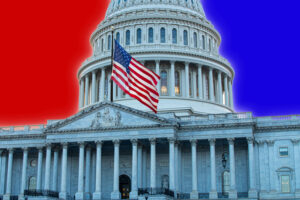
As Political Parties Fall, Gold and Silver Will Rise
The comments below are an edited and abridged synopsis of an article by Egon von Greyerz
As the Western financial and political systems face unprecedented challenges, wealth preservation takes on a new significance. Political instability, currency devaluation, and market volatility underscore the necessity of safeguarding assets. In this context, gold and silver emerge as reliable havens amid the turmoil.
The West is entering a period marked by political and social upheaval, reflecting the end of a significant era. This turbulence stems from decades of deficit spending, massive debt accumulation, currency debasement, and inflation, leading to widespread political and economic instability.
Political landscapes in Western countries are in disarray. Regardless of which party gains power, deficit spending is set to escalate, especially in the UK with its new Labour-led government, in France with its fragile coalition, and in the US, where political uncertainty looms large. The US faces an imminent debt crisis, compounded by leadership challenges on both sides of the political spectrum.
Financial markets will mirror this political chaos in the coming months and years. Geopolitical risks are also considerable, with the potential for major conflicts, even nuclear war, although such outcomes are generally recognized as catastrophic by global leaders. Modern warfare, including cyberwarfare, presents additional threats, as nations possess the capability to cripple critical infrastructure, plunging societies into chaos.
The world’s dependence on electronic systems is a vulnerability. Without these systems, modern society could regress dramatically, highlighting the fragility of our technological reliance.
Political turmoil is pervasive. Leaders in the West may struggle to complete full terms, with political volatility becoming the norm. For instance, UK Prime Minister Keir Starmer won with only 33% of the vote, while 80% of eligible voters did not support him. In the US, the political scene remains deeply divided, with potential outcomes generating significant controversy and dissent.
Historical patterns suggest that such upheavals occur at the end of dominant eras, as seen with Rome, France, the Ottoman Empire, and the British Empire. Currently, the US empire, primarily financial rather than territorial, is experiencing its decline. European governments, often aligned with US interests, will also feel the impact as the US-led debt bubble bursts, diminishing its financial and military dominance.
Wealth preservation is crucial to avoid wealth destruction. Over the past 25 years, advocating for physical gold has proven effective, with gold outperforming many asset classes, including the S&P 500. As the world faces significant economic challenges, the awareness of risk among investors remains surprisingly low.
Investors often believe diversification across various asset classes is sufficient for wealth preservation. However, many of these assets are correlated, influenced by credit expansion and money printing. As US debt has skyrocketed from $1.7 billion in 1971 to $100 trillion today, the stock market’s dependence on debt becomes evident, resembling a Ponzi scheme.
The rise of gold is inevitable. The Dow-Gold ratio, which once reached parity in 1980, suggests a potential shift towards higher gold valuations. As BRICS countries increase their gold purchases and central banks move away from US treasuries, gold’s role as a reserve asset will solidify. Investors should consider gold as financial insurance. Holding physical gold and silver in secure vaults within safe jurisdictions is prudent. While specific target prices for gold and silver can be speculative, the emphasis should be on preserving and potentially enhancing wealth through these assets. Given the scale of the upcoming crisis, allocating 20% to 50% of financial assets to gold may be the best insurance policy available.

